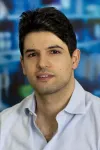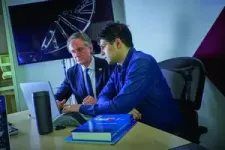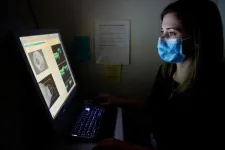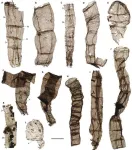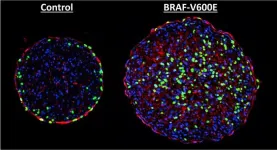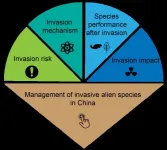“A huge body of evidence shows that cancer caught at later stages kills people. This new technology gets us closer to a world where people will receive a blood test annually to detect cancer earlier when it is more treatable and possibly curable,” said Cristian Tomasetti, Ph.D., corresponding author of the new study and director of City of Hope’s Center for Cancer Prevention and Early Detection.
Tomasetti explained that 99% of people diagnosed with Stage 1 breast cancer will be alive five years later; however, if it is found at Stage 4, when disease has spread to other organs, the five-year survival drops to 31%.
The technology City of Hope, TGen and colleagues developed was able to identify half of the cancers in the 11 studied types. The test was highly accurate with a false positive in only 1 out of every 100 tested. Importantly, most of the cancer samples originated from people with early-stage disease, who had few or no metastatic lesions at diagnosis.
Working in the background was an algorithm they developed called Alu Profile Learning Using Sequencing (A-Plus). It had been applied to 7,657 samples from 5,980 people — 2,651 of whom had cancer of the breast, colon and rectum, esophagus, lung, liver, pancreas, ovary or stomach.
When a cell dies, it breaks down and some of the DNA material of the cell leeches into the bloodstream. Cancer signals can be found in this cell-free DNA (cfDNA). The cfDNA of normal cells breaks down at a typical size, but cancer cfDNA fragments break down at altered spots. This alteration is hypothesized to be more present in repetitive regions of the genome.
So instead of analyzing specific DNA mutations by looking for one misarranged letter out of billions of letters, researchers led by City of Hope and colleagues at John Hopkins University came up with a new way to detect the difference in fragmentation patterns in repetitive regions of cancer and normal cfDNA. As a result, fragmentomics requires about eight times less blood than required by whole genome sequencing, Tomasetti said.
“Our technique is more practical for clinical applications as it requires smaller quantities of genomic material from a blood sample,” said Kamel Lahouel, Ph.D., an assistant professor in TGen’s Integrated Cancer Genomics Division and the study’s co-first author. “Continued success in this area and clinical validation opens the door for the introduction of routine tests to detect cancer in its earliest stages.”
Tomasetti is poised to open a clinical trial in summer 2024 to compare this fragmentomics blood testing approach with standard-of-care in adults aged 65-75. The prospective trial will determine the effectiveness of the biomarker panel in detecting an earlier stage of cancer when it is more treatable.
City of Hope’s Center for Cancer Prevention and Early Detection is focused on producing key research findings and technologies based on noninvasive blood tests and imaging to detect cancers years before conventional diagnostic methods.
# # #
The Science Translational Medicine study “Machine Learning to Detect the SINEs of Cancer” was supported by Burroughs Wellcome Career Award for Medical Scientists, National Institutes of Health (R21NS113016, RA37 CA230400, U01CA230691, U01CA230691), Oncology Core CA 06973, John Templeton Foundation, The Virginia and D.K. Ludwig Fund for Cancer Research, Thomas M Hohman Memorial Cancer Research Fund, Alex’s Lemonade Stand Foundation, The Sol Goldman Sequencing Facility at Johns Hopkins, The Conrad R. Hilton Foundation, Benjamin Baker Endowment (80049589), National Institutes of Health grant Ovarian Cancer SPORE (DRP 80057309), Swim Across America, and Ian’s Friends Foundation.
About City of Hope
City of Hope's mission is to deliver the cures of tomorrow to the people who need them today. Founded in 1913, City of Hope has grown into one of the largest cancer research and treatment organizations in the U.S. and one of the leading research centers for diabetes and other life-threatening illnesses. City of Hope research has been the basis for numerous breakthrough cancer medicines, as well as human synthetic insulin and monoclonal antibodies. With an independent, National Cancer Institute-designated comprehensive cancer center at its core, City of Hope brings a uniquely integrated model to patients spanning cancer care, research and development, academics and training, and innovation initiatives. City of Hope’s growing national system includes its Los Angeles campus, a network of clinical care locations across Southern California, a new cancer center in Orange County, California, and treatment facilities in Atlanta, Chicago and Phoenix. City of Hope’s affiliated group of organizations includes Translational Genomics Research Institute and AccessHopeTM. For more information about City of Hope, follow us on Facebook, Twitter, YouTube, Instagram and LinkedIn.
About TGen, part of City of Hope
Translational Genomics Research Institute (TGen) is a Phoenix, Arizona-based nonprofit organization dedicated to conducting groundbreaking research with life-changing results. TGen is part of City of Hope, a world-renowned independent research and treatment center for cancer, diabetes and other life-threatening diseases. This precision medicine affiliation enables both institutes to complement each other in research and patient care, with City of Hope providing a significant clinical setting to advance scientific discoveries made by TGen. TGen is focused on helping patients with neurological disorders, cancer, diabetes and infectious diseases through cutting-edge translational research (the process of rapidly moving research toward patient benefit). TGen physicians and scientists work to unravel the genetic components of both common and complex rare diseases in adults and children. Working with collaborators in the scientific and medical communities worldwide, TGen makes a substantial contribution to help patients through efficiency and effectiveness of the translational process. Follow TGen on Facebook, LinkedIn and Twitter @TGen.
END
